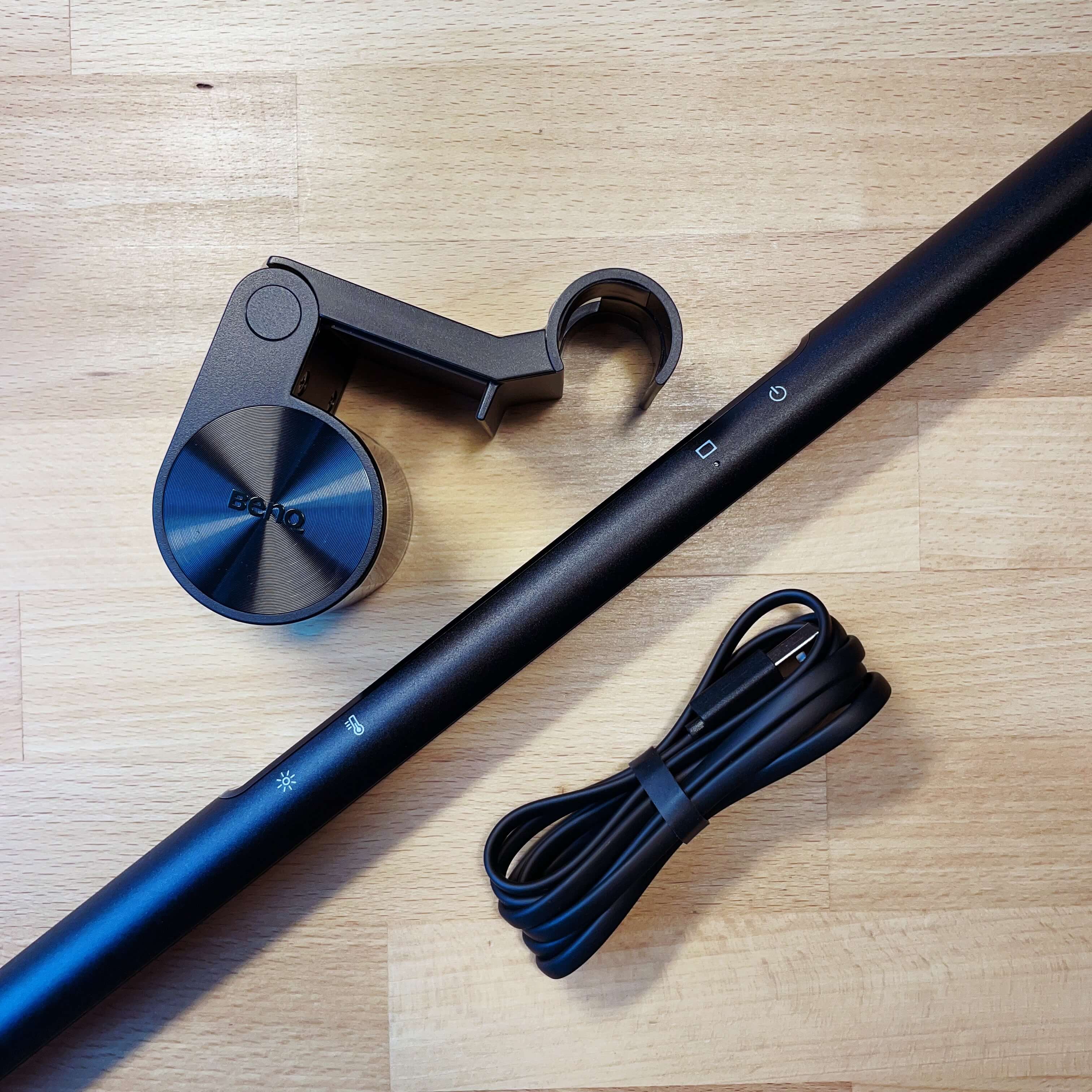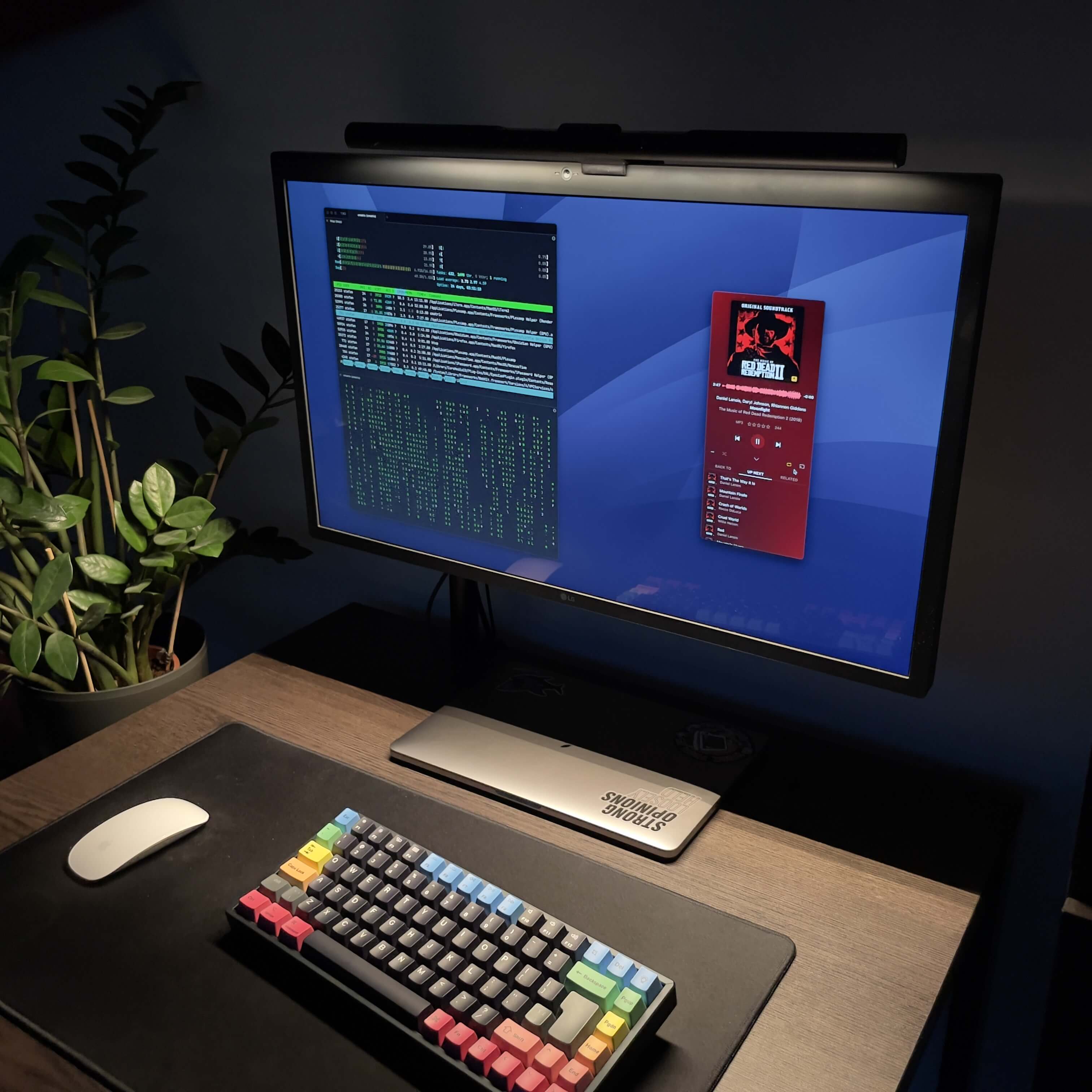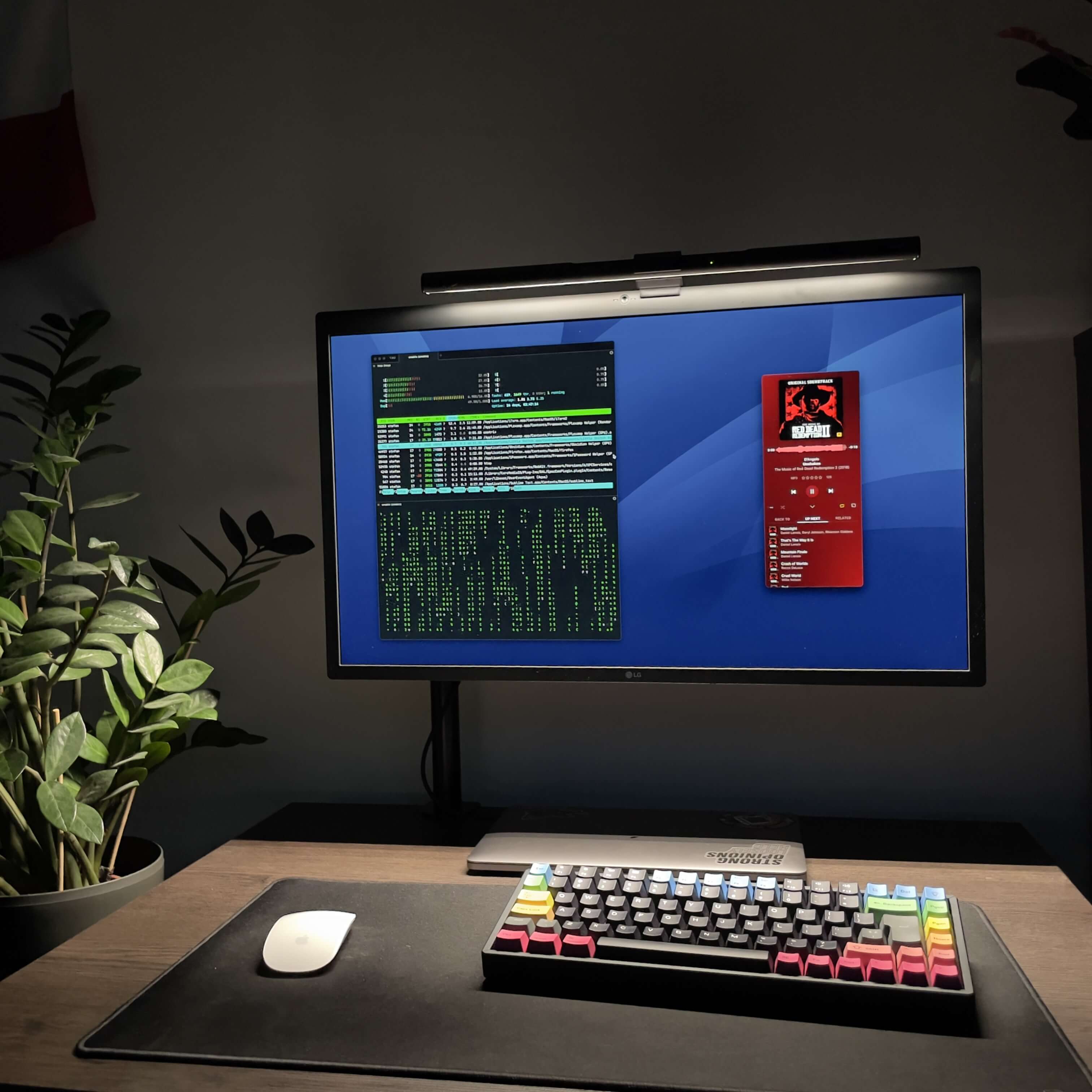Review: BenQ ScreenBar
Disclaimer: BenQ reached out to me, if I would be willing to review their ScreenBar product. I agreed, as I was actively looking for a lamp for my home office setup. They provided me with a free review unit. I still voice my personal opinion in this piece, but keep this in mind while reading the review.
I live in a relatively small flat in Zurich. Space is sparse and that also applies to my home office desk. With a width of only 80cm, there is not much room to place a lamp on the desk.
As I get older, I notice that my eyes get irritated more often, if there is not enough light when reading a book or working at the computer. At my desk, I've solved this by cable-tieing an old fluorescent tube to the monitor arm. The lamp is behing the monitor and gives some indirect light when working at night.
But fluorescent tubes are old-tech: Use a lot of energy and are not that good for the environment. I put a task on my todo list to search for a better solution. As it happens so often with such tasks, I've put it off way too long.
It was a happy accident that BenQ reached out to me, just as I was starting to look for a new lamp.
The ScreenBar – as the name might suggest – is a lamp that clips to the top of a screen. Thanks to a counterweight, it doesn't need any screws or anything else to stay in place.
Packaging
Once the review unit arrived, I was surprised how light the package was. The box only contained three items:
- the lamp
- the clip/counterweight
- a USB-A to USB-C power cable


Only the lamp and the USB power cable was wrapped in plastic. The clip was protected against scratchings with a sticker. The rest of the box was made out of recyclable cardboard. (Usually such products are wrapped in styrofoam or tons of plastic. Good to see manufacturers use less plastic in their packaging nowadays).
Assembly
The box didn't contain a manual on how to assemble the lamp. But there was a QR code which promised to bring me to a manual. But instead of pointing me towards the assembly video, it redirected me to the EU homepage of BenQ.
But a manual is barely needed. All you have to do, is align the USB port on the lamp with the clip and push the two components together. Connect the USB cable and you're good to go.

The last part is placing the lamp on your monitor. And here I ran into the first problem: I have a LG UltraFine display which has a built-in webcam at the top-center of the monitor. When placing the ScreenBar at the center of the monitor, the lower edge of the clip cuts into the viewport of the webcam by 2mm.
But that easily resolved by nudging the screenbar a couple of millimeters to the left or right.
For power, I connected the lamp with the USB-C port on the back-side of the LG UltraFine display. As the lamp came with a USB-C to USB-A cable, I had to use a dongle for this. (But I will replace the dongle with a proper USB-C to USB-C cable soon.)
Using it
Now to the lamp itself. At the top of the bar, you can power it on and off through a simple touch. The light fades in and out without a flicker.
Next to the on/off button is the auto dimmer button. It uses the built-in light sensor to adjust brightness and color temperature (Goes from 2700K to 6500K). While using the lamp over the last few days, I've always used the auto dimmer mode and barely noticed when the light switched color temperature or brightness. It's all very smooth and not abrupt.
On the left-hand side of the lamp are touch buttons for manual brightness- and color temperature adjustment. They work great as well. Just touch the button for a couple of seconds and the light smoothly gets dimmer or brighter.


Another good thing about this lamp, is that the light is not reflected into the display itself. So no glares or weird reflections. 👍
Verdict
I received the lamp on the 27th of July and publish this blog post 2 weeks later on the 8th of August. So far I can say, that the ScreenBar does it's job well. Better than my old solution with the fluorescent tube at least.
When I work in low light conditions, the lamp shines a bright light over the whole desk. The automatic hue and brightness adjustment work great. There is not much more I can say here, it's a lamp after all.
The product is not cheap though. In Switzerland, it currently can be purchased for CHF 139 (~145 USD; ~142€). If you're on a tight budget, this lamp is probably not for you.
Is it worth the high price? Hard to tell after just 2 weeks, but the lamp and the clip are well built and should hopefully last me for the next 10 years. (According to the packaging, the LED strip in the lamp has a lifetime of 50'000 hours. If used 8 hours per day, that's 17 years.)
However, for this steep price, I expected the package to include a USB-C to USB-C power cable. All modern devices come with USB-C ports. USB-A is being phased out of the lifes of many consumers; but probably still the dominant standard that products still ships with USB-A cables.
If you would like to purchase a ScreenBar yourself, BenQ provided me with the following Amazon link: BenQ Screenbar on Amazon
(I don't profit from purchases made through that link)